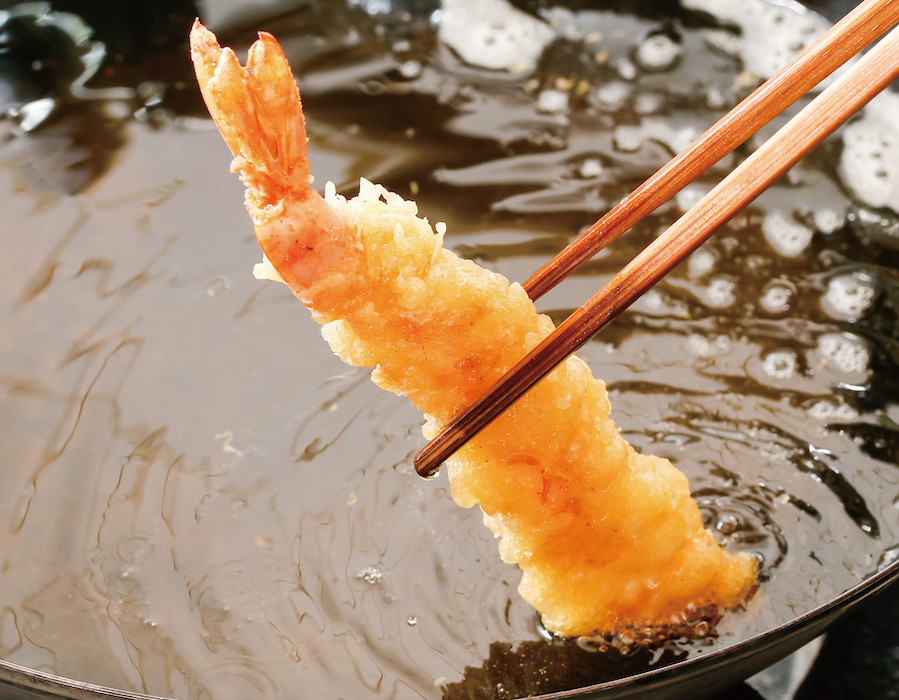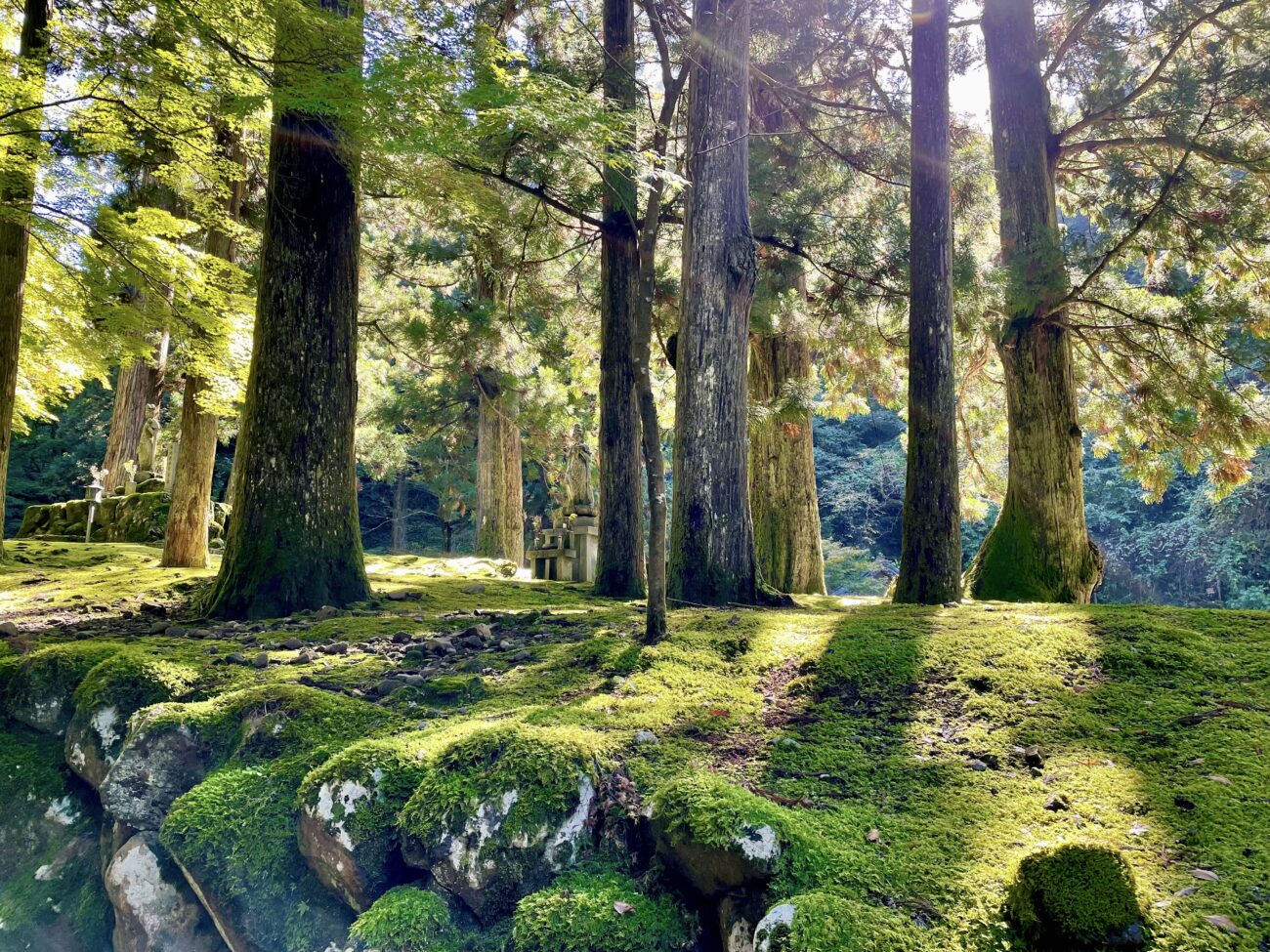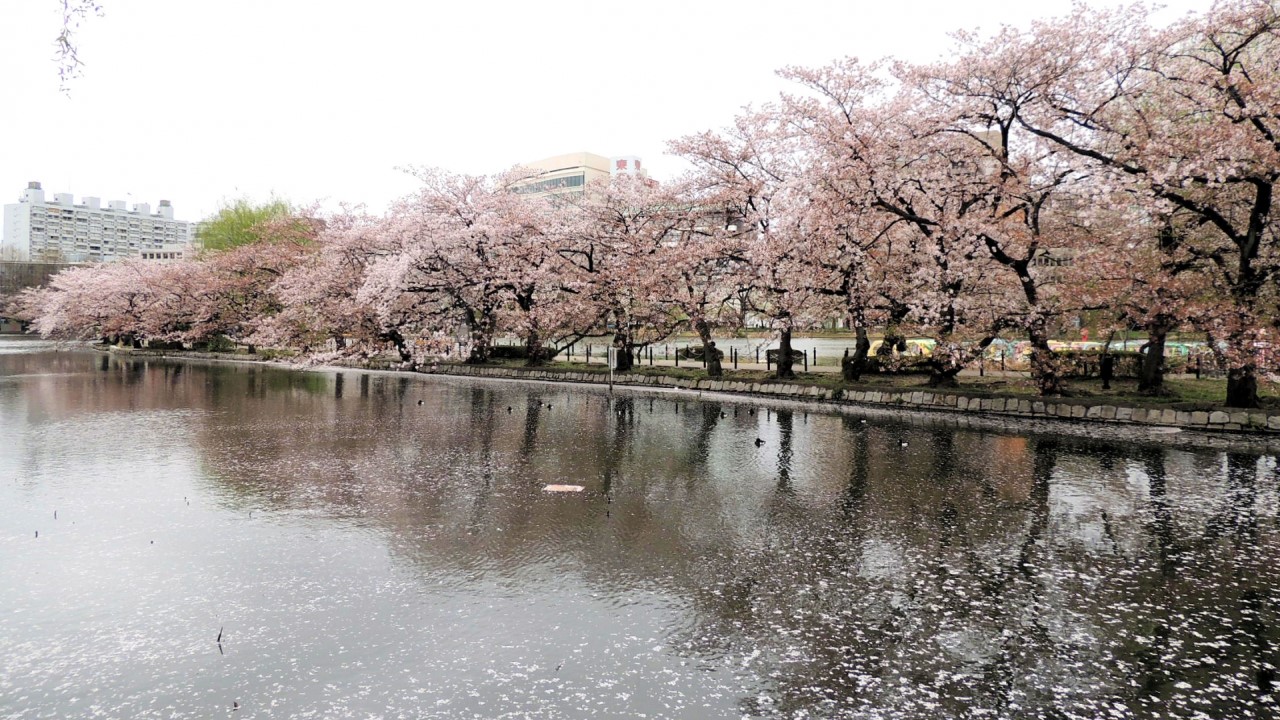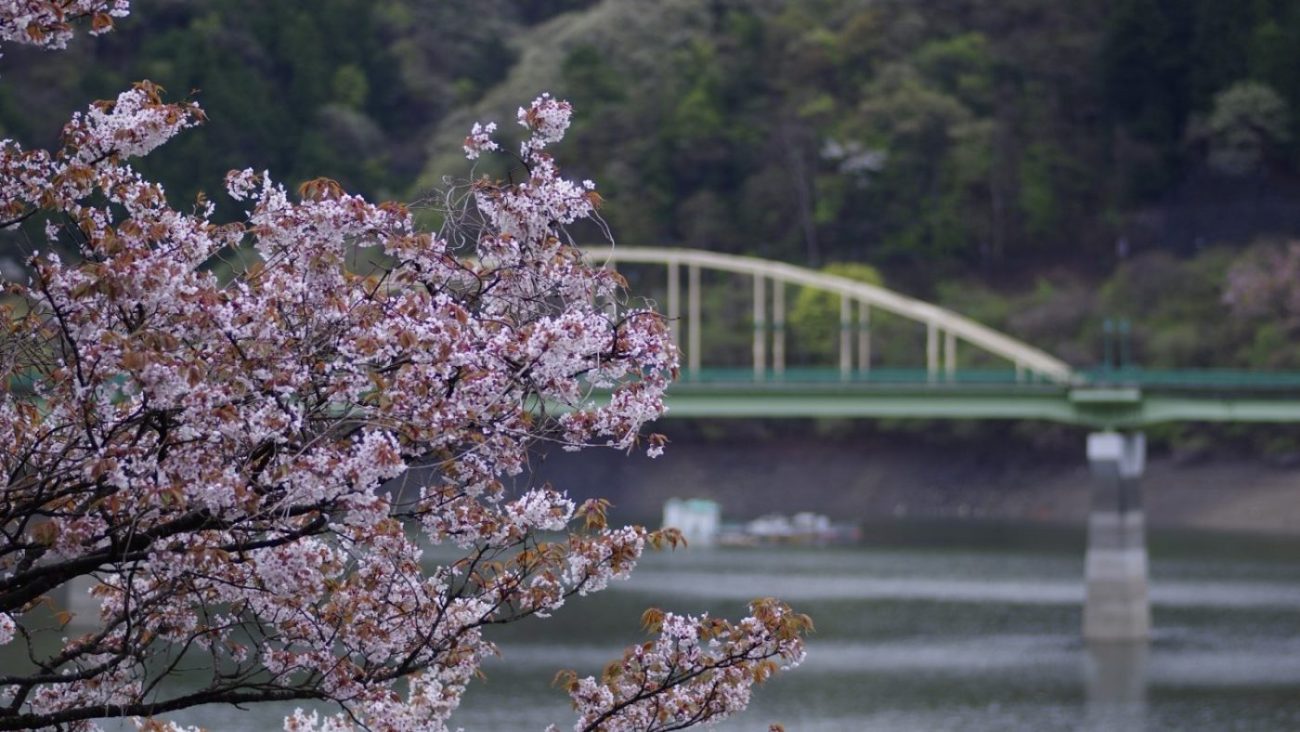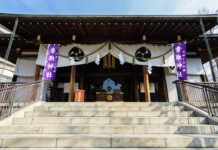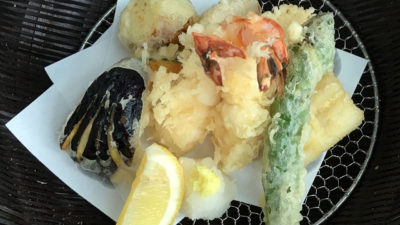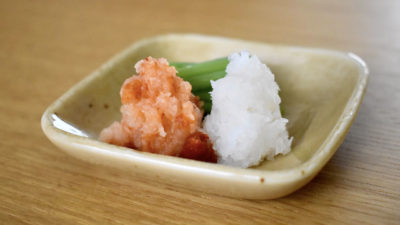Few food symbols are as iconic as the golden, crispy batter-covered shrimp tempura. In Japanese kanji the “ten” in “tempura” uses the character for “heaven”, and the addition of this traditional cuisine to the Japanese menu was certainly a godsend. The heavenly deep-fried seafood ascended along with soba and kabayaki, but the cooking oils used in the deep-frying process meant they had to be cooked and sold in stalls outside due to restrictions from the fire-conscious shogunate. However, that didn’t stop merchants from setting up shop in crowded squares like Nihonbashi-minamizume and meeting the demands of hungry Japanese customers. In fact, the many tempura stalls mingling with other shops within these Edo period food courts led to a number of great new ideas and pairings like tempura-soba.
The Limitless Ingredients of Tempura

Tempura is one of the tastiest ways to enjoy Japan’s seasonal vegetables — called yasai-age or shojin-age — and fresh seafood, as just about any selection becomes more appealing when coated in fluffy, crispy batter. Some favorite seafood ingredients used for tempura include anago (conger eel), shiba-ebi (shiba shrimp), kohada (gizzard shad), kaibashira (shell ligaments), and surume (dried cuttlefish). No matter what time of year, there are always fresh ingredients ready to be transformed into hot, crunchy tempura. As you can imagine, the simple cooking method has remained basically the same since the Edo period. First the ingredients are covered in a batter of egg and flour before being fried in hot sesame oil. However, it is not just the delicious batter that makes tempura what it is, the deep-frying process itself adds more flavor to the ingredients as the water from the batter steams the seafood and vegetables inside its crunchy shell as it is being fried.
The Inseparable Duo of Tempura and Grated Radish
Like many other national dishes of Japan, tempura also has its own signature condiment, grated radish. From its creation in Edo times, the beloved street snack has never gone without its spicy, white companion. In addition to complementing the flavor of tempura, grated radish also brings some health benefits to the table. In its raw form, grated radish contains enzymes which aid in digestion making it pair well with greasy, oily fried foods such as tempura. The dish is also usually enjoyed with a side of salt and sweet ten-tsuyu sauce which consists of dashi, mirin, and soy sauce.
*There are various theories.
Where to sink your teeth into crispy-crunchy deep-fried tempura: Tempura Sansada
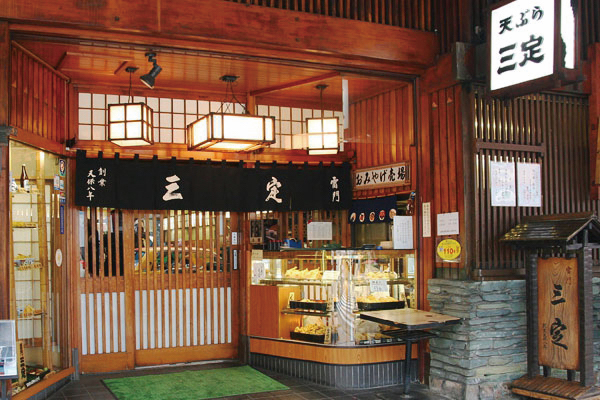
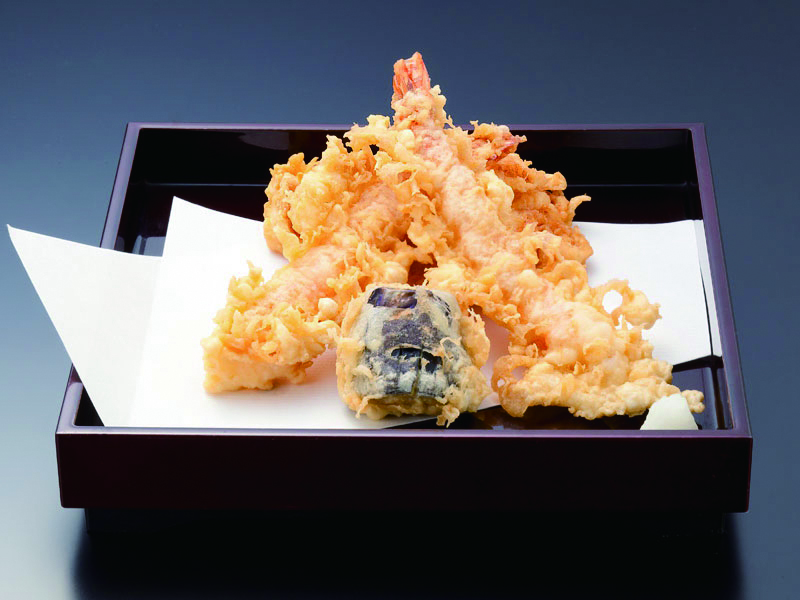
Have a delicious tempura meal with a side of history and culture right next the famous Asakusa Sensoji Temple. Since opening in 1837, Tempura Sansada has been frying up delicious treats for over 180 years, making it the oldest tempura restaurant in Japan. Tempura Sansada has maintained the reputation of its sesame oil-fried tempura from the Edo-period and is now even popular among foreign visitors for its fantastic location and traditional taste. Try the surprisingly juicy Ten-don bowl which serves delicious tempura quickly dipped in Ten-don sauce over rice.
Address: 1-2-2 Asakusa, Taito-ku, Tokyo
Hours: 11:00am – 9:00pm
URL: www.tempura-sansada.co.jp/index-en.html
 0
0

